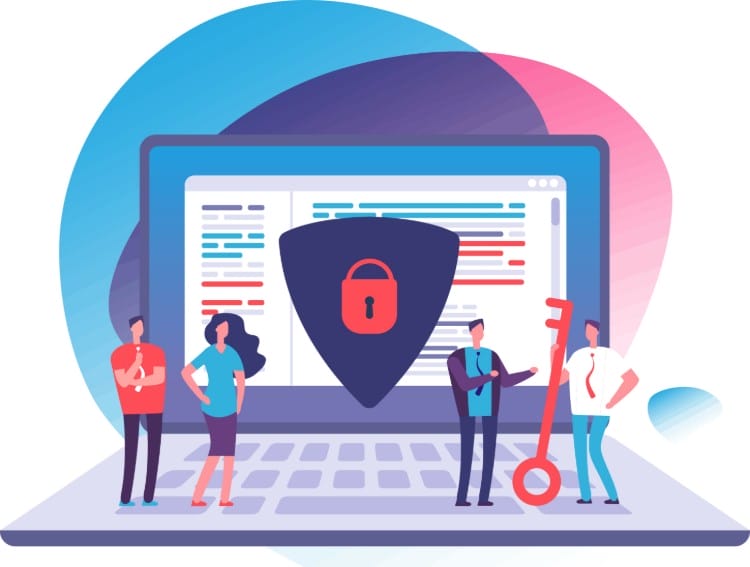As recruiters adopt advanced technologies in their quest to identify, court and hire candidates, attorneys are looking into the legal and regulatory issues those new tools may bring into play.
Lawyers, recruiting experts and technology vendors say legal teams are examining compliance concerns even as their colleagues in HR and IT evaluate products that leverage artificial intelligence, machine learning and other innovative approaches. Not only are they exploring the ramifications of privacy requirements such as Europe’s GDPR, they’re considering the possible impact of biases that may be inherent in a data set or unwittingly applied by algorithms.
 “I think we’re at the beginning of sorting out what all this means, but I think it’s definitely something people are thinking about,” said Jeffrey Bosley, San Francisco-based partner in the labor and employment practice of law firm Davis Wright Tremaine. “It’s a new technology and it’s evolving. Whenever you have a new technology, you do have growing pains and you do have these issues that come up,” he said.
“I think we’re at the beginning of sorting out what all this means, but I think it’s definitely something people are thinking about,” said Jeffrey Bosley, San Francisco-based partner in the labor and employment practice of law firm Davis Wright Tremaine. “It’s a new technology and it’s evolving. Whenever you have a new technology, you do have growing pains and you do have these issues that come up,” he said.
Advanced technologies have gotten much attention recently, particularly as people inside and outside the business world consider the impact AI may have on jobs and livelihoods. At the same time, some well-intentioned efforts have generated media coverage for results that were diametrically opposed to what their developers set out to do.
In 2018, for example, Amazon abandoned an effort to build a machine-learning tool for recruiters after the system proved to be favoring men over women. According to Reuters, the tool downgraded resumes that included the word “women’s” as well as the graduates of two all-women’s colleges.
Also read: Is there room for an ethics code for tech companies?
Sources inside Amazon said the system, which had been under development since 2014, was meant to review resumes so recruiters could spend more time building candidate relationships and actually hiring people. It worked by comparing applicants against patterns found among resumes the company had received over a 10-year period. However, it didn’t account for the dominance of men in the technology workforce. As a result, the system machine-taught itself that male candidates were stronger than females.
Advanced technology “is at an awkward stage where it’s not really intelligent,” said William Tincup, president of the industry website RecruitingDaily.com. While he sees great potential for AI and other tools to streamline the work of recruiters and even address bias in the hiring process, he believes systems are limited in how much they can accomplish.
Why? In a word, people. “What are machines learning from their learning from humans?” Tincup asked. Hiring managers can’t help but operate with a number of possible preconceptions in their minds, from unconscious bias about race or gender to a preference for the candidate they most recently interviewed or who seems the most like themselves. Such biases, Tincup observed, live on in the makeup of a company’s existing workforce. And that leads to the troubles Amazon faced, where the data set reflects decisions made in the past more than it positions a process to understand needs of the future.
Technology Races Ahead
The situation is complicated by the idea that technology has outpaced legal and business practices. While they believe that will eventually change, analysts and technology vendors don’t see it changing quickly.
“Right now, technology’s moving super-fast,” said Ankit Somani, co-founder of the talent acquisition and management platform AllyO, headquartered in Palo Alto, California. “Generally, regulators and the folks who control compliance standards don’t move so quickly. But, honestly, we’re like three lawsuits away from somebody taking it very seriously.”
“Therein lies a real big rub,” Tincup said of regulation’s lag behind talent acquisition and HR practices. Nearly all of the processes involved with turning candidates into employees touch some kind of employment law or EEOC-related issues, but “all of those rules are outdated,” he said. “We’ve been working outside of the rules for 15 or 20 years. I would argue that there isn’t a company in the United States that’s 100 percent compliant from sourcing to outplacement.”
Talent acquisition teams, and HR in general, understand that and are beginning to adopt, said Brian Delle Donne, president of Talent Tech Labs, an industry analyst and consulting firm based in New York. However, he believes determining exactly how and where compliance fits in with the use of new technologies has been complicated by the way “artificial intelligence” has been “grossly generalized” in industry conversations.
“Most of the time they’re talking about machine learning, or sometimes just automated workflow processing,” Delle Donne said. “When you get into true artificial intelligence, where the machine is making decisions, it’s a higher threshold that’s required for our concern about the accuracy of [its] recommendations and predictions.” The distinction between true AI and what might be called “advanced technology” is important, he believes, because people assume that the machine is prescient when it’s usually not. “In most cases, it will be quite a while until machines are actually making decisions on their own,” Delle Donne observed.
Even in today’s state, the use of advanced technology has become widespread enough to raise concerns about whether it might, inadvertently, nudge an employer out of compliance. For example, AI-driven tools may use personal information in unplanned ways that a candidate hasn’t given permission for. That would raise privacy concerns. Or, tools might present results that, intentionally or not, run afoul of fair-employment legislation. “On both fronts, you’re talking about compliance statutory norms,” said Delle Donne.
AI’s Behavior
Such concerns, along with widespread speculation about AI’s impact, has made advanced technology “front of mind for many people,” said Bosley. In response, governments at all levels have begun generating “a patchwork” of laws that sometimes conflict with one another.
For example, Illinois’s Artificial Intelligence Video Interview Act went into effect Jan. 1, 2020. The law sets out transparency and consent requirements for video interviews, as well as limits on who can view the interviews and how long they can be stored. However, Bosley said, the law’s mandate to destroy videos within 30 days may conflict with the preservation requirements of other state and federal laws, including in the Civil Rights Act of 1964 and the Americans with Disabilities Act.
Also read: How Will Staney continues to change the talent acquisition game
“It puts employers in a position where they’re really going to need to assess risk,” Bosley said. “They’re going to need to come up with creative solutions to try and work around some of this risk.”
Not all employers may feel exposed in the near term, Tincup suggested. He estimates that each year only a handful of legal actions are taken because of a candidate’s unhappiness with the recruiting process. People practices, technology practices and civil and social discourse are “way ahead of employment law,” he explained. “So is this something that’s going to create an immense amount of risk? No.” Employers today, he believes, put themselves at more risk by hiring a salesperson with a history of sexual harassment. In that regard, “you could spend more money in risk mitigation … than in recruitment technology,” he said.
At the same time, an organization’s risk may be based on activities that aren’t related to recruiting or the workforce, Bosley points out. “This isn’t just a human resources issue anymore. It’s not only an employment law issue anymore. It’s much broader than that,” he said. “You have data protection, data compliance, privacy and the potential for disparate impact claims as opposed to disparate treatment claims.”
Bosley anticipates more claims will be filed that look into a database’s contents, what data’s being looked at, how it’s being processed and whether algorithms are static or refined over time. Essentially, these claims will examine how advanced technology is making its decisions. “It’s going to be something where human resources leaders are looking to involve others in the organization and make sure that they’re both issue-spotting and getting ahead of some of these compliance issues,” he said.
Indeed, Somani believes this notion of “explainability” — laying out what a system does and how it’s doing it — will become more important in the realms of recruiting technology and compliance. “There should, in my mind, be more compliance standards around that,” he said.
Evolving Standards
Even at a basic level, compliance standards for using technology in recruiting “don’t exist,” Somani said. For example, does texting about a job opportunity constitute a form of marketing? Is such a text permissible if it’s personalized? Because the answer’s not clear, he believes many companies are putting stricter guidelines in place.
Somani also said legal departments are becoming more involved in the purchase and implementation of recruiting technology. For tools handling communications, such as those that facilitate SMS messaging between recruiters and candidates, they’re trying to anticipate issues by creating policies that cover not only privacy, but data collection and permissions. “It’s an explicit ask in almost every deal we go into: ‘If a consumer doesn’t want to interact with your system, how do you follow that?’ ” he said. When it comes to issues related to AI’s under-the-hood work, vendors focus on transparency and disclosure by presenting disclaimers on their product or within their privacy policies.
For enterprises, compliance issues “can be a deal-breaker,” said Megan Gimbar, the Holmdel, New Jersey-based product marketing manager for iCIMS Hiring Suite, at least at the corporate level. While compliance and consistency are important components of her product, she said, talent acquisition teams often shy away from the topic.
In the past, employers tried to ensure compliance through training. Their approach, said Delle Donne, was to make hiring managers aware of interview questions that shouldn’t be asked (such as inquiring whether a woman intended to have children) or information that shouldn’t be considered (the candidate’s age or ZIP code). “That’s a fairly low bar,” he observed.
The bar began getting higher “once we started saying algorithms are going to make that determination for us,” Delle Donne continued. “Algorithms might actually do a better job, [or] may actually be set up in a way that they might do a better job, than humans do at avoiding compliance issues through bias.” However, he said, that requires planning and a focus on non-discrimination features when algorithms are designed.
Also read: The ethics of AI in the workplace
Compliance Further Afield
The compliance issues raised by using AI in recruiting aren’t limited to talent acquisition alone. For one thing, Somandi notes, recruiters today leverage a variety of tools that were introduced into other functions.
Think of how candidate management systems and customer management systems align. When using those technologies, compliance may involve adapting the standards used by marketing or sales so they can be applied to talent acquisition and HR.
That road goes both ways. Even solutions designed for recruiters raise issues that aren’t unique to hiring, Delle Donne said. “As HR tries to digitize, there are many, many places where technology can streamline processes and save time and perhaps be more beneficial to the employee or the party,” he said. Many, if not all, of those will lead to some kind of compliance question. For example, a bot used in benefits administration may build a profile of confidential medical information. Or, a learning program might enter performance scores into an employee record without informing the employee. That could be a problem if those scores impact a person’s future promotions or career path.
As it digitizes, the tools implemented by HR “will bring in these technologies and there’s going to have to be some focus or some attention given to not inadvertently creating bias or discrimination, or revealing private information,” Delle Donne said. “If you take a step back, it just could be like whack-a-mole. I mean, ‘Hey, we see it over here in talent acquisition. Let’s go chase that down and… Oh, wait. We just saw this going on over there.’”
Scheduling employees is one major HR task for which technology can help. Make more accurate, data-driven scheduling decisions in just a few clicks with Workforce.com’s comprehensive scheduling software.



 Employers want to learn increasingly more data about their employees, he said. They have the opportunity to do so through commercial apps that capture wellness and fitness data. “These are things that people perceive as health data, but they’re not covered by HIPAA, and they were never designed to be covered by HIPAA,” he said.
Employers want to learn increasingly more data about their employees, he said. They have the opportunity to do so through commercial apps that capture wellness and fitness data. “These are things that people perceive as health data, but they’re not covered by HIPAA, and they were never designed to be covered by HIPAA,” he said. 